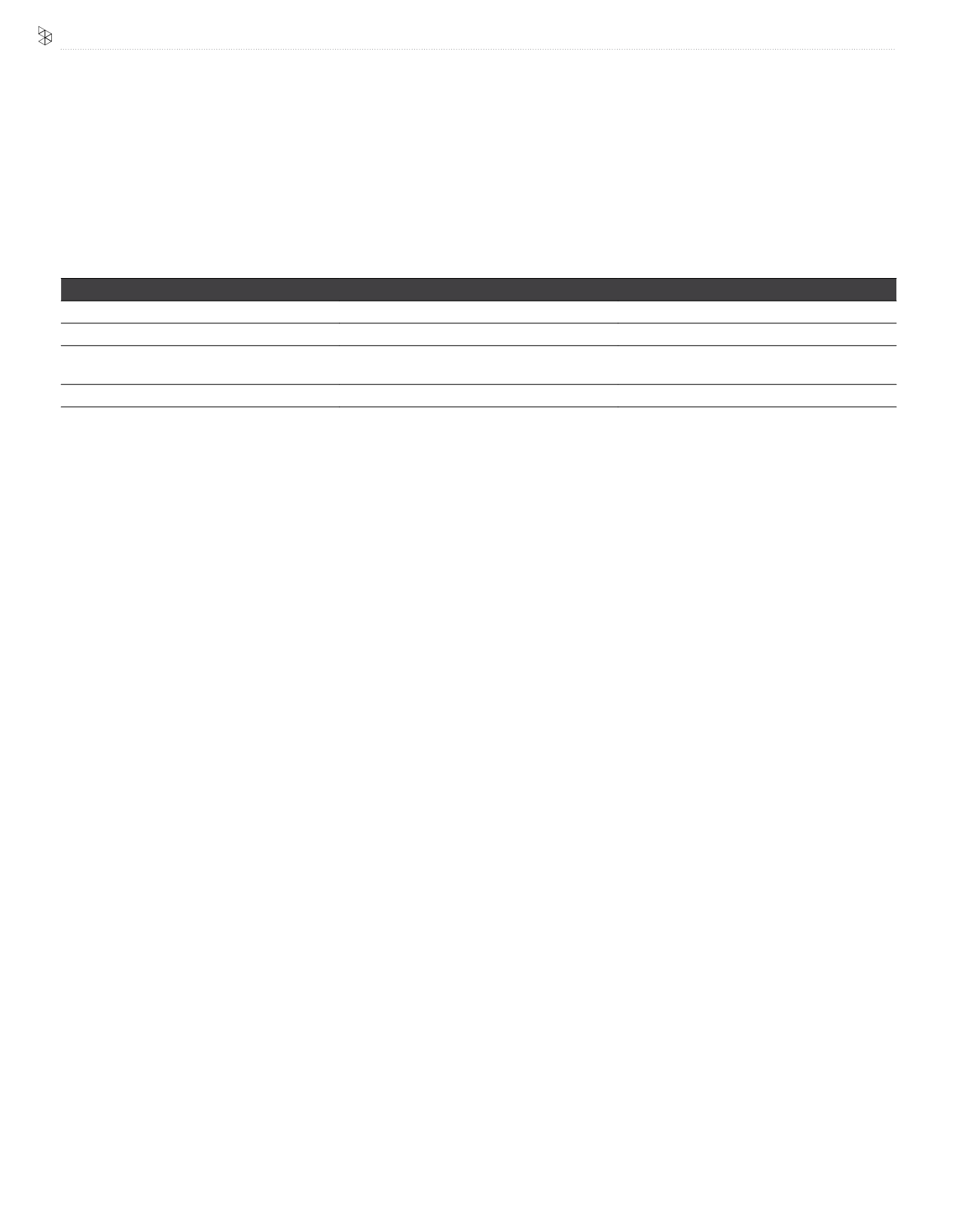

Axiata Group Berhad | Annual Report 2016
GOVERNANCE
106
Composition and Meetings
In 2016, the BAC, met six (6) times on 11 January 2016, 16 February 2016, 17 March 2016, 24 May 2016, 23 August 2016 and 23 November 2016. The
composition and the attendance record of BAC members are listed below.
Name of Director
Status of Directorship/Qualifications
No. of Meetings Attended
David Lau Nai Pek (Chaiman of BAC)
Independent Non-Executive Director
6 out of 6
Datuk Azzat Kamaludin
Senior Independent Non-Executive Director
6 out of 6
Juan Villalonga Navarro
(Retired w.e.f. 25 May 2016)
Independent Non-Executive Director
1 out of 4
Kenneth Shen
Non-Independent Non-Executive Director
6 out of 6
Financial Literacy
The BAC is chaired by David Lau Nai Pek, who has more than 30 years’
experience with the Royal Dutch Shell Group, leading financial organisations
in various countries. David is also a member of the Malaysian Institute of
Accountants and a member of the New Zealand Institute of Chartered
Accountants.
Datuk Azzat Kamaludin has spent many years in the BACs and Boards of
major companies in Malaysia and internationally.
Juan Villalonga was Chairman and Chief Executive Officer of a major
telecommunications services provider in Spain. He was also the former Chief
Executive Officer of major banking institutions in Spain. He has retired from
BAC with effect from (w.e.f.) 25 May 2016.
Kenneth Shen has more than 25 years’ experience in global investment,
corporate finance, and mergers and acquisition gained in New York, Hong
Kong, Qatar and Malaysia.
Group Internal Audit
The internal audit function is under the purview of Axiata Group Internal
Auditors (AGIA) and headed by the Group Chief Internal Auditor (GCIA), who
is independent and reports directly to the BAC and the CSSC.
The internal audit reporting structure within the Group has been organised
whereby the audit departments of the OpCos report directly to the BAC
of the respective OpCo with a dotted reporting line to the GCIA. AGIA has
direct control and supervision over internal audit activities in OpCos that do
not have an audit function. The GCIA also acts as the secretary to the BAC
and CSSC.
AGIA provides independent, objective assurance on areas of operations
reviewed, and makes recommendations that will improve and add value
to the Group. AGIA identifies, coordinates and conducts global audits that
are carried out throughout the Group and also provides standards, policies,
guidelines and advice to the OpCos’ audit function to standardise the
internal audit activities within the Group.
BOARD AUDIT COMMITTEE
AGIA adopts a systematic and disciplined approach to evaluate the
adequacy and effectiveness of risk management, financial, operational,
compliance and governance processes. Structured risk-based and strategic
based approaches are adopted in identifying internal audit activities that are
aligned with the Group’s strategic plans to ensure that the risks facing the
Group are adequately reviewed.
In addition, international standards and best practices are adopted to further
enhance the relevancy and effectiveness of the internal audit activities.
The areas of coverage include finance, sales, marketing, information and
technology, billing, network, corporate governance, human resources,
customer service and procurement. The audit reports of these assignments
provide independent and objective assessment of the following:
•
the adequacy, effectiveness and efficiency of the internal control
systems to manage operations and safeguard the Group’s assets and
shareholders’ value; and
•
the adequacy and effectiveness of the risk management operations,
governance and compliance functions to identify, manage and address
potential risks facing the Group.
The internal audit reports are issued to management for their comments
and to agree on action plans with deadlines to complete the necessary
preventive and corrective actions. The reports are tabled at each OpCo’s
BAC and the summary of the key findings are presented to the BAC for due
deliberation to ensure that management undertakes to carry out the agreed
remedial actions. Members of management are invited to the BAC meetings
from time to time, especially when major control weaknesses are highlighted
by Internal Audit.
Key audits and reviews completed in 2016 were:
•
Distributors Management
•
SAP System (IT General Controls – Procure to Pay)
•
Human Resource Management
•
Follow up review on capex efficiency audit
•
Follow up review on revenue assurance assessment
•
Audit on Axiata Procurement Centre
•
Audit on Ncell procurement









